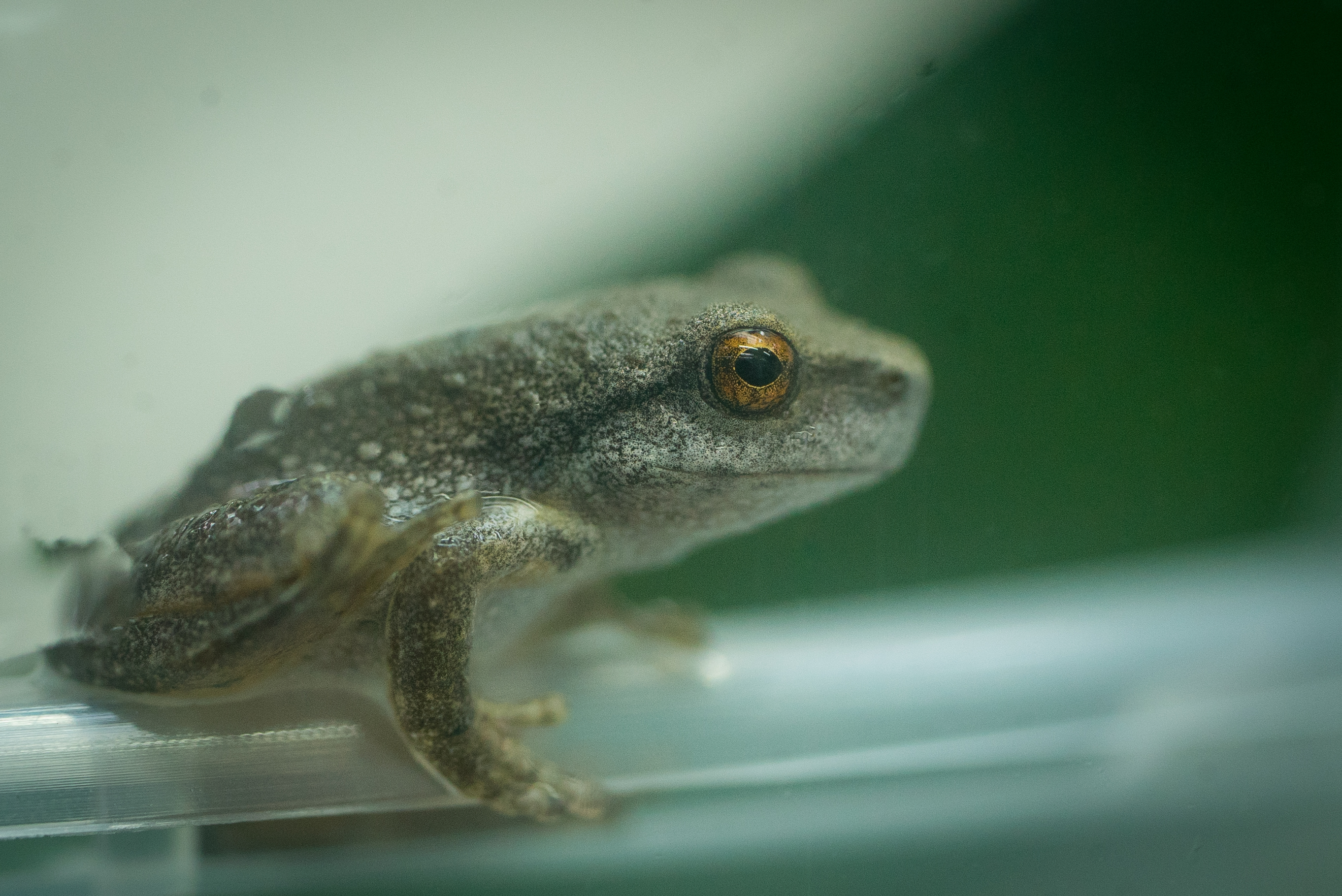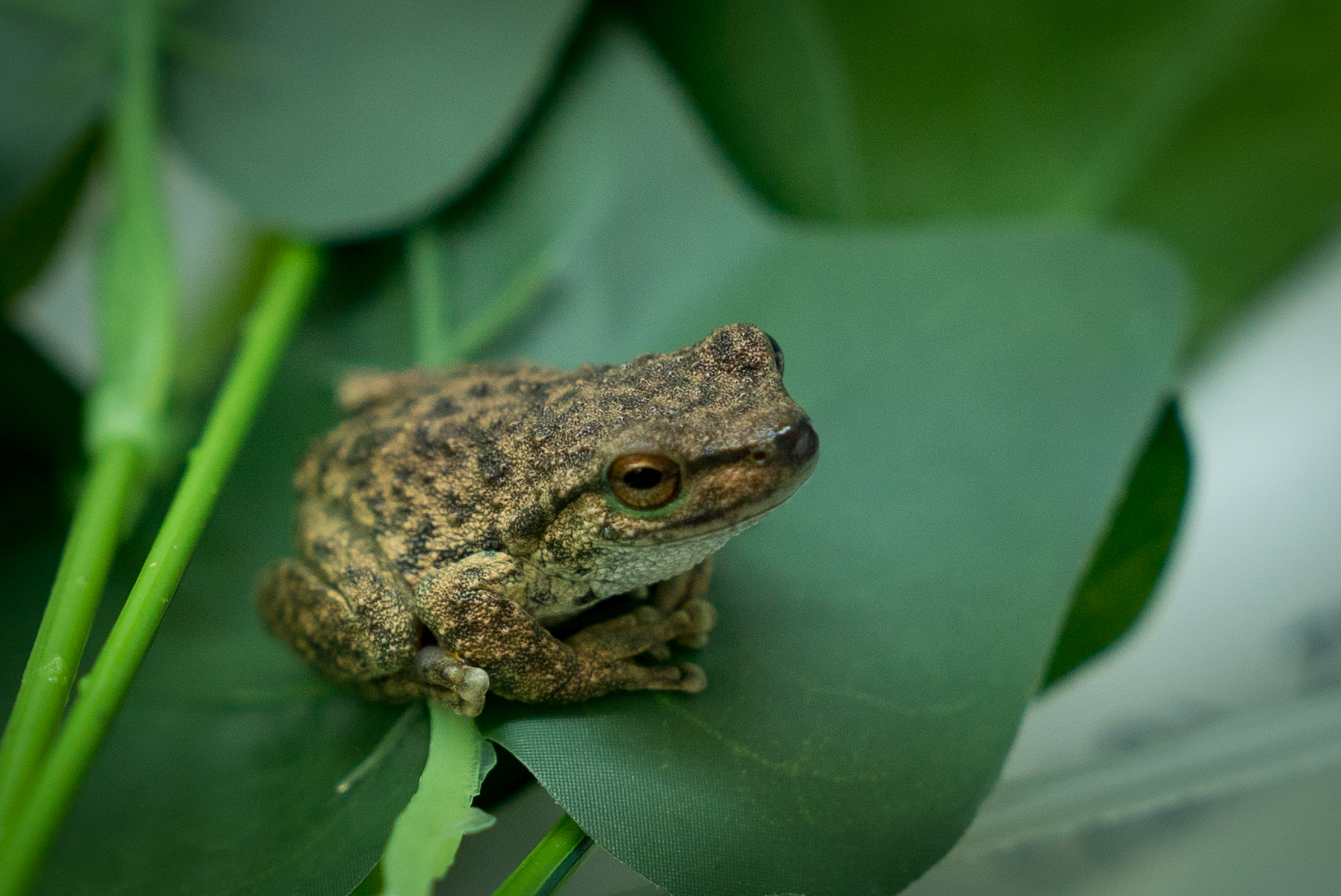Endangered frogs collected from fire impacted areas for safekeeping
The potentially fatal combination of bushfires, flooding and deadly fungal disease has seen critically endangered Spotted Tree Frogs collected from their habitat in north-east Victoria for a captive breeding recovery program at Zoos Victoria’s Healesville Sanctuary.

The Spotted Tree Frog Project forms part of the Victorian Government’s $51.5 million Bushfire Biodiversity Response and Recovery program, which supports on-ground action to help at-risk species impacted by the 2019/20 bushfires.
Over the past couple of weeks Spotted Tree Frogs (Litoria spenceri) have been collected from fire-affected rivers in the Upper Murray and Wonnangatta areas, and 19 are in quarantine at Healesville Sanctuary where they are being screened for the deadly disease
Chytridiomycosis caused by Amphibian Chytrid Fungus.
Zoos Victoria Threatened Species Biologist Deon Gilbert said the frogs are adapting well to their new surroundings and will be managed under strict quarantine and hygiene protocols for the next few months.
“These highly important founders will go on to form the basis of a conservation breeding program at Zoos Victoria,” Mr Gilbert said. “We anticipate that in the next few years we will be in a position to begin reintroduction trials at key wild release sites. This program is an optimistic step forward for the conservation of this species and is the result of many decades of intensive work by program stakeholders.”
“These highly important founders will go on to form the basis of a conservation breeding program at Zoos Victoria,” Mr Gilbert said.
The Spotted Tree Frog is critically endangered across Victoria and New South Wales, and in the past three decades has continued to decline due to a range of threats.
In the aftermath of the 2020 fires, researchers from the Department of Environment, Land, Water and Planning (DELWP), the University of Melbourne and the Threatened Species Recovery Hub conducted field surveys across seven locations in north-east Victoria.
The surveys confirmed multiple bushfires, flash flooding and sediment events, and a high incidence of the deadly fungal disease, had significantly impacted the population.
DELWP, Senior Natural Environment Programs Officer, Glen Johnson, said the surveys undertaken post-fire and last spring confirmed that action needed to be taken.
“Taking this small number of frogs with genetic diversity from multiple sites to establish the captive breeding program maximises the potential for successful breeding and longer-term reintroduction programs, which is incredibly important for their survival,” Mr Johnson said.
University of Melbourne amphibian ecologist, Dr Matt West, said the captive breeding program had to balance impacts on the wild populations now and into the future.

“The majority of the frogs collected are juveniles to reduce the potential impact on the remaining wild populations,” Dr West said. “If the program is successful, we will release animals back into the wild and increase their resilience to existing threats like disease caused by chytrid, and also future bushfire events.”
The Spotted Tree Frog Project is supported by the Australian Government’s National Environmental Science Program through the Threatened Species Recovery Hub and funding from the Australian Government’s Bushfire Recovery Program for Wildlife and their Habitats. Zoos Victoria is grateful for funding support towards this project from The Calvert-Jones Foundation and through Cadbury’s Save The Frogs initiative.
